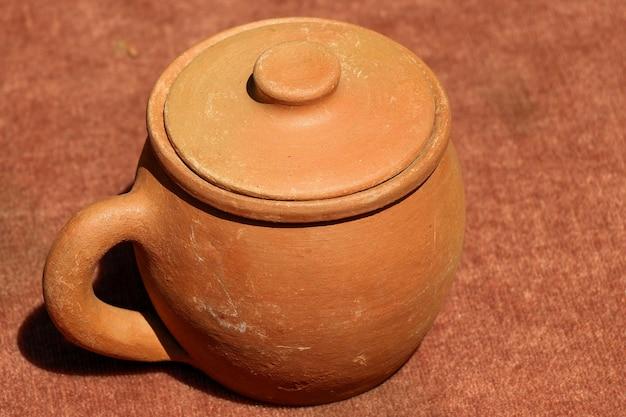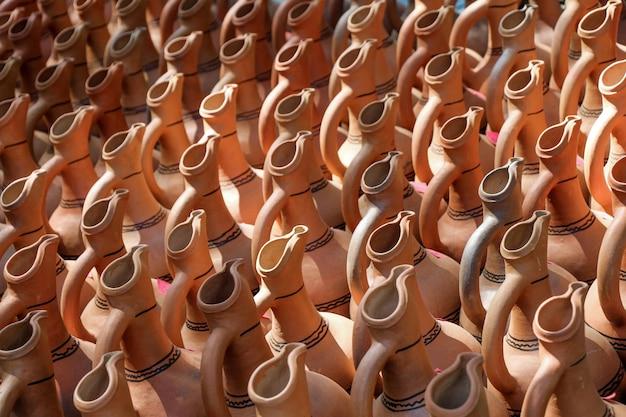Clay has been used for centuries as a versatile medium for artistic and practical creations. However, not all clay is created equal. One of the questions that often arises is whether oil-based clay hardens. In this blog post, we will explore the properties of oil-based clay and delve into the factors that determine its hardening capabilities.
If you’ve ever worked with clay, you may have encountered the terms “non-hardening clay” or “oil-based clay.” These are varieties of clay that do not dry and harden like traditional clay fired in a kiln. Instead, they remain pliable and workable, making them ideal for sculpting, modeling, and prototyping.
Whether you’re a seasoned artist or a beginner exploring the world of clay, it’s essential to understand how oil-based clay differs from other types and how to work with it effectively. In this blog post, we will address common questions about oil-based clay, such as how to soften it, bake it, and reuse it. So, let’s dive in and demystify the fascinating world of oil-based clay!
Does Oil Based Clay Harden
If you’re a fan of working with clay, you might have heard of oil-based clay. It’s a popular choice for sculptors and artists due to its pliability and ease of use. But one question that often comes up is whether oil-based clay hardens or not. Let’s dig deeper into this intriguing topic and uncover the truth.
Understanding Oil Based Clay
Oil-based clay, also known as plasteline or plasticine, is made from a combination of oils, waxes, and fillers. Unlike water-based clays that dry and harden with exposure to air, oil-based clay remains soft and malleable indefinitely. This unique characteristic makes it a go-to medium for artists who need a clay that can be easily manipulated and reworked.
The Perks of Non-Hardening Clay
The fact that oil-based clay doesn’t harden has its advantages. For starters, artists can take their time when working on a project, without worrying about the clay drying out. They can leave their creations unfinished for days, weeks, or even months, and pick up where they left off without any issues. This makes it ideal for complex and time-consuming sculptures.
Preserving Clay Creations
If you’ve spent countless hours sculpting a masterpiece, you definitely want to preserve it. While oil-based clay won’t harden on its own, there are ways to make it more durable. One common method is to create a mold of the clay sculpture and cast it in a material that does harden, such as plaster or resin. This way, you have a permanent replica of your creation while still retaining the flexibility of the original clay.
Storage Tips for Oil-Based Clay
To keep your oil-based clay in prime condition, there are a few things you need to keep in mind. First and foremost, store it in an airtight container or wrap it tightly in plastic wrap to prevent it from drying out. Make sure to keep it away from direct sunlight and excessive heat, as this can cause the clay to become soft and lose its shape. By following these storage tips, your oil-based clay will stay pliable and ready for your next artistic endeavor.
So, does oil-based clay harden? The answer is no, it doesn’t. Oil-based clay remains soft and workable indefinitely, making it a favorite among sculptors and artists who appreciate its flexibility and ease of use. While it may not harden on its own, there are ways to make it more permanent, such as creating molds and casting it in harder materials. So go ahead, unleash your creativity, and enjoy the endless possibilities that oil-based clay offers.
FAQ: Does Oil-Based Clay Harden
Oil-based clay is a popular choice for sculptors and artists due to its pliability and ability to hold detail. However, there is some confusion surrounding whether oil-based clay hardens or not. In this FAQ-style subsection, we’ll answer some commonly asked questions about the hardening properties of oil-based clay and provide helpful tips along the way.
How Do You Get Clay to Harden
Traditional clay, such as air-dry clay or polymer clay, typically hardens through air drying or baking. However, oil-based clay is non-drying, meaning it does not harden naturally over time. It retains its soft and malleable consistency indefinitely, making it perfect for sculpting and modeling projects that require ongoing modifications.
What Does Non-Hardening Clay Mean
Non-hardening clay refers to clay that does not dry or harden when exposed to air or heat. Oil-based clay falls under this category, as it remains soft and workable regardless of the environmental conditions. This characteristic allows artists to continue refining their creations without the worry of their masterpiece drying out prematurely.
How Do You Make Clay That Doesn’t Harden
Oil-based clay is formulated to not harden, thanks to its unique composition. It contains oil, usually a combination of waxes, mineral oils, and binding agents, that prevents the clay from drying out. This composition allows oil-based clay to remain pliable and reusable for extended periods, providing artists with the freedom to explore their creative visions without time constraints.
How Many Times Can You Reclaim Clay
One of the fantastic features of oil-based clay is its ability to be reclaimed and reused repeatedly. If you’re unsatisfied with your creation or want to start fresh, you can simply gather all the clay scraps, warm them slightly with your hands or using a heat source like a hairdryer, and blend them together until smooth. This process revitalizes the clay, saving you money and minimizing waste.
Can You Dry Non-Hardening Modeling Clay
No, non-hardening modeling clay, like oil-based clay, cannot be dried. It will retain its soft and pliable texture indefinitely due to its composition. This characteristic makes it ideal for artists who prefer to work on their projects over a more extended period without worrying about the clay drying out.
How Do You Soften Oil-Based Clay
If your oil-based clay feels a bit firm or difficult to manipulate, there are a few simple tricks to soften it up. You can warm the clay in your hands, place it near a heat source like a radiator or in direct sunlight for a short time, or use a hairdryer on a low setting to gently warm the clay. Once softened, it will become more pliable, allowing you to work with it more easily.
Can I Bake Non-Hardening Modeling Clay
No, non-hardening modeling clay, including oil-based clay, should not be baked. The high temperatures involved in the baking process can cause the clay to release harmful fumes and deform. So, it’s best to avoid baking non-hardening modeling clay to maintain its integrity and ensure your safety.
What Happens if You Bake Oil-Based Clay
Baking oil-based clay is not recommended, as it can lead to undesirable results. When exposed to the high temperatures of an oven, oil-based clay may melt, burn, or emit toxic fumes. It’s crucial to respect the characteristics of this type of clay and avoid subjecting it to heat beyond what it can handle.
Why Is My Clay Not Hardening
If you’re using oil-based clay or another non-hardening clay and notice it’s not hardening, don’t panic! Non-hardening clay doesn’t dry or harden naturally like other types of clay. It retains its soft consistency indefinitely, allowing for continuous sculpting and modifications. Embrace the pliability and versatility of non-hardening clay for your artistic endeavors.
How Do You Harden Non-Hardening Clay Without an Oven
Since non-hardening clay doesn’t require hardening, there’s no need to worry about finding alternative methods to solidify it. Oil-based clay and similar non-hardening clays remain soft and moldable regardless of environmental conditions. Enjoy the freedom to shape and reshape your creation without the need for additional hardening steps.
Can You Reuse Oil-Based Clay
Absolutely! One of the significant advantages of oil-based clay is its reusability. If you’re unhappy with your creation or want to start a new project, gather all the clay scraps, warm them up in your hands or with the help of a heat source, and blend them together. This process allows you to reclaim and reuse the clay repeatedly, making it a cost-effective and sustainable choice for artists.
What Type of Clay Does Not Harden
Non-hardening clay refers to clay that does not dry or harden naturally. Oil-based clay is one such type, remaining soft and workable indefinitely. Other non-hardening clays include plasticine, self-hardening clay (also known as air-dry clay), and certain types of sculpting clays. Each of these clays offers its own unique advantages and characteristics, catering to the preferences and needs of different artists.
Can You Use Water with Oil-Based Clay
Oil-based clay is hydrophobic, meaning it repels water. Attempting to mix oil-based clay with water will result in the water separating from the clay, preventing proper cohesion. To maintain the desired consistency, texture, and workability of oil-based clay, it’s best to avoid introducing water into the equation.
Can You Bake Clay to Harden It
While many clays require baking to harden, oil-based clay is an exception. Baking oil-based clay can lead to melting, deformation, or the release of toxic fumes. Instead of baking, embrace the unique properties of oil-based clay, and enjoy the freedom to sculpt and modify your creations without relying on heat to solidify them.
How Do You Harden Clay in a Microwave
Unlike some other types of clay, oil-based clay cannot be hardened in a microwave. The intense heat generated by the microwave can cause the clay to melt, burn, or produce harmful fumes. It’s essential to follow the recommended guidelines for each specific clay type and avoid subjecting oil-based clay to heat sources that can compromise its integrity.
Which Clays Are Oil-Based
Oil-based clays come in various forms, each with its own unique qualities and applications. Some notable examples of oil-based clays include Plastilina, also known as plasteline or plasticine, Roma Plastilina, and Chavant NSP. These clays remain soft and pliable, making them popular choices for sculpting, prototyping, and artistic exploration.
Does Oil-Based Clay Dry
No, oil-based clay does not dry or harden naturally. It retains its soft and pliable consistency indefinitely, thanks to its unique composition. This quality sets oil-based clay apart from other types of clays, allowing artists to work on projects over more extended periods and continuously refine their creations without concerns about drying or hardening.
Remember, when working with oil-based clay or any other type of clay, it’s essential to choose the one that suits your artistic vision and preferences. So, embrace the versatility, pliability, and non-hardening nature of oil-based clay, and let your creativity flow without the constraints of time and drying deadlines. Happy sculpting!

